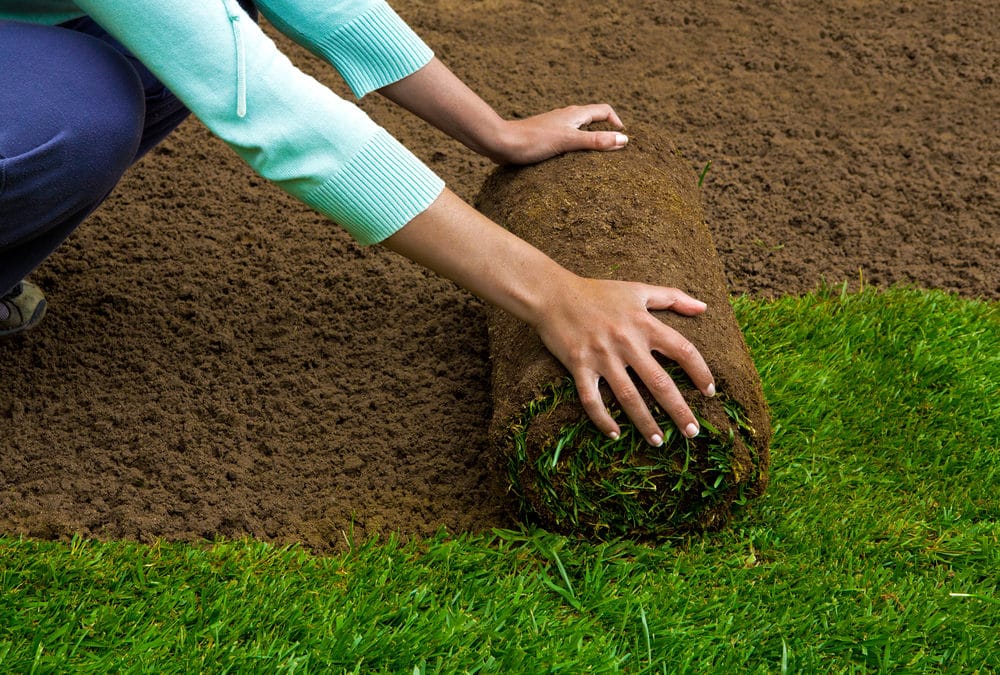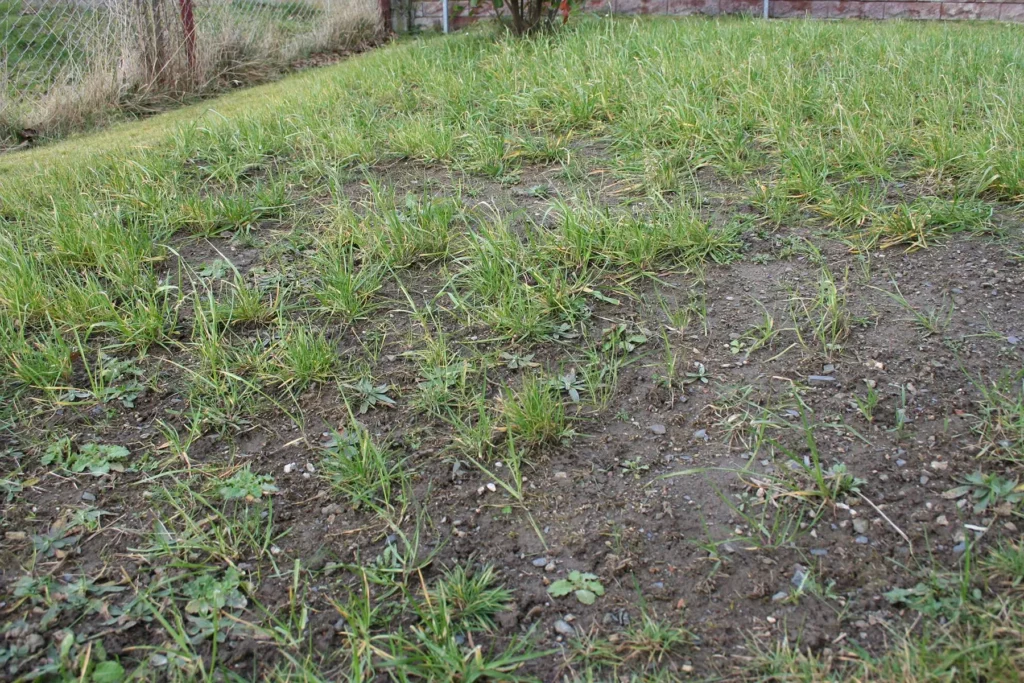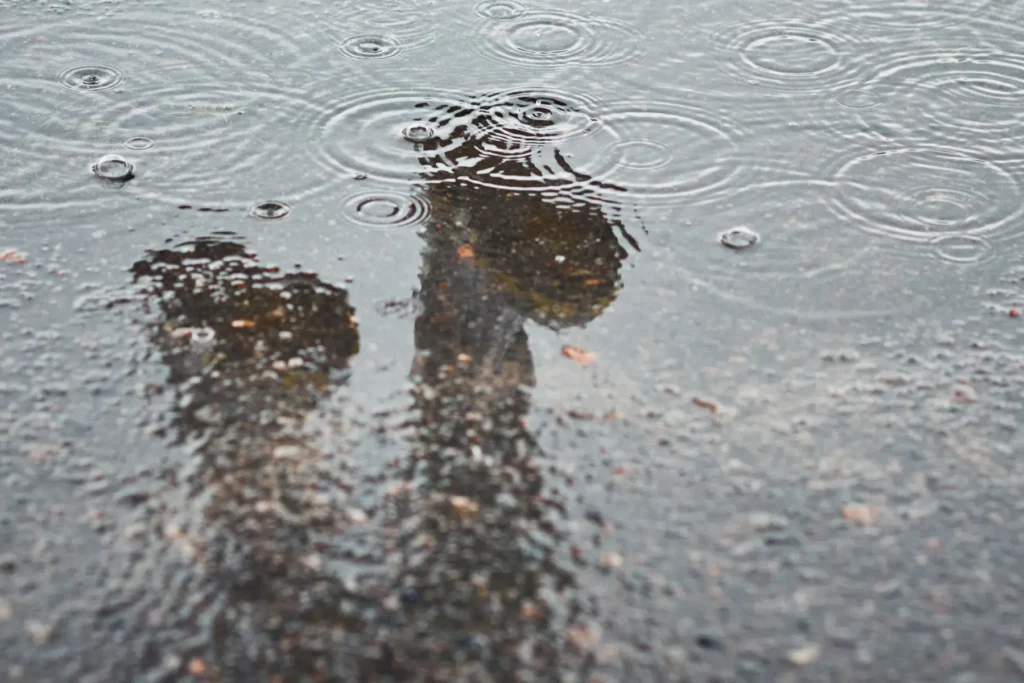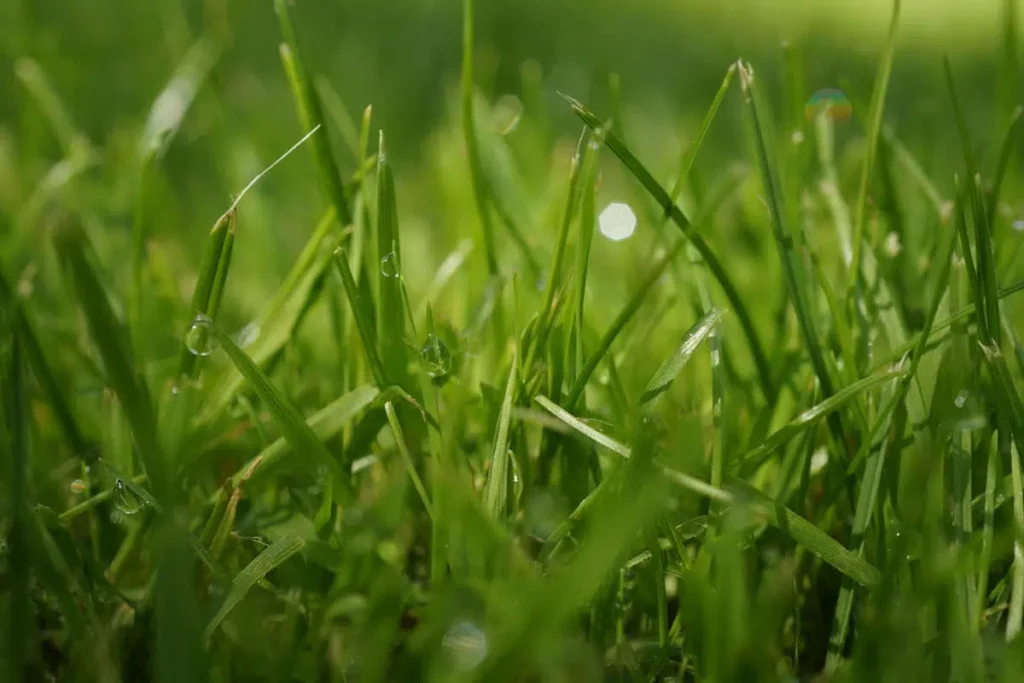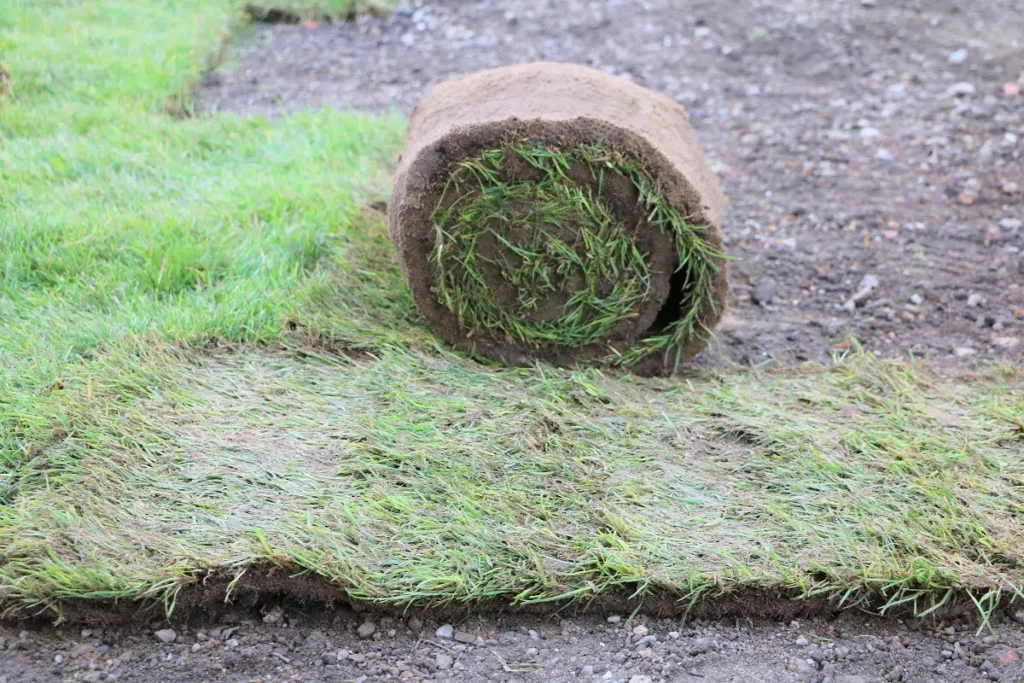Almost every home with a garden also includes at least a small piece of lawn. It can be used in many ways for playing and recreation, enriching the appearance of a quiet, pleasant area, which can be specifically arranged with other planting.
In order to then have the hoped-for green in one’s own garden as quickly as possible, rolled turf offers the possibility of laying already finished turf from a roll in the garden.
If this then becomes yellow or brown after installation, good advice is often expensive. We tell you how they can provide a quick remedy in most cases.
Contents
Causes
It happens again and again that turf becomes brown or yellow in parts or even all over the surface in the course of time. However, these discolorations are usually signs of a problem which, if not “treated”, can sooner or later lead to permanent damage to the sod, or even to the death of the entire turf. Therefore, once detected, it is worthwhile to quickly identify the causes, as well as determine appropriate measures to eliminate them:
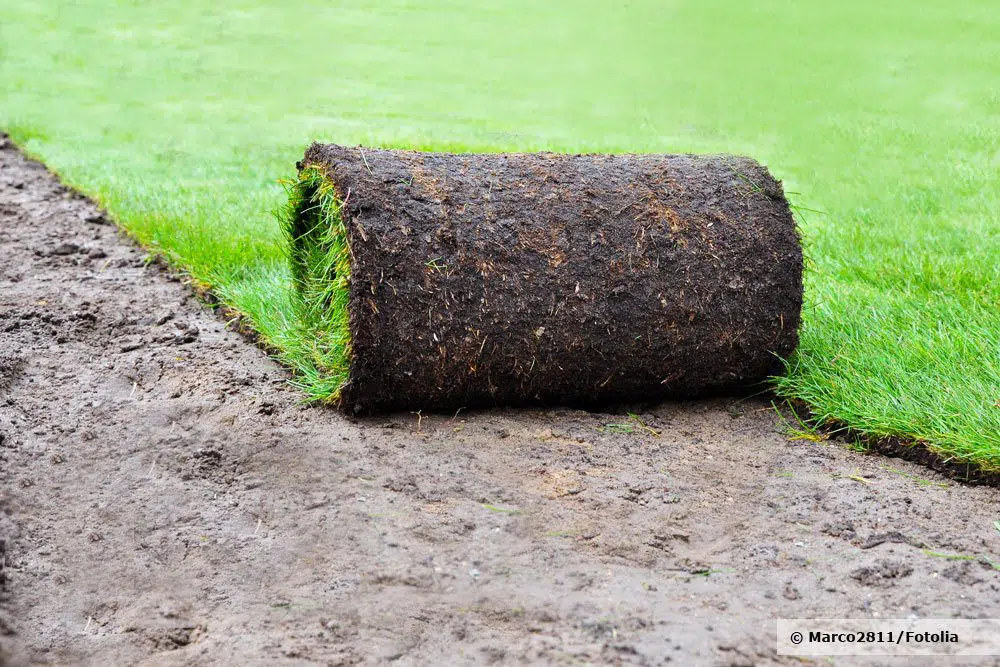
Note: For better clarity, the following list is sorted according to the causes. If sorted by symptoms, a distinction would only be made between brown and yellow, but with an enormous variety of possible origins in each case.
Water deficiency
Symptoms
leaves turning brown from the leaf tip
accompanied by rapid drying of the brown parts of the leaves
preceding already lower water content by lying stalks recognizably
Possible cause
- watering too seldom or too little
- lack of contact of the rolled turf with the subsoil
- consequently no access to water reserves of the soil
- too high soil compaction
- Layout of the turf with folds or hollows
Remedy
- if the water supply is too low, increase the amount of irrigation water
- in case of insufficient soil contact elimination of hollow spots by removing the sod and filling it in
- Creation of a full-surface contact by rolling again
- if the soil compaction is too high, mulching of the lawn including the subsoil to create the permeability necessary for root growth
Attention: If the soil under the sod is too compacted, the roots will not be able to reach the water in this soil layer. Since removing the sod with subsequent loosening of the soil seems hardly practical, the area should be carefully scarified. This will at least achieve some improvement. However, the process should not be too intensive to minimize damage to the turf sod.
Note: If only the water supply is missing, either the pure amount can be increased, or the watering can be optimized. Small daily applications are less effective because large amounts evaporate before they reach deeper layers. More infrequent gifts in larger quantities penetrate deeper and remain usable for the grass longer.
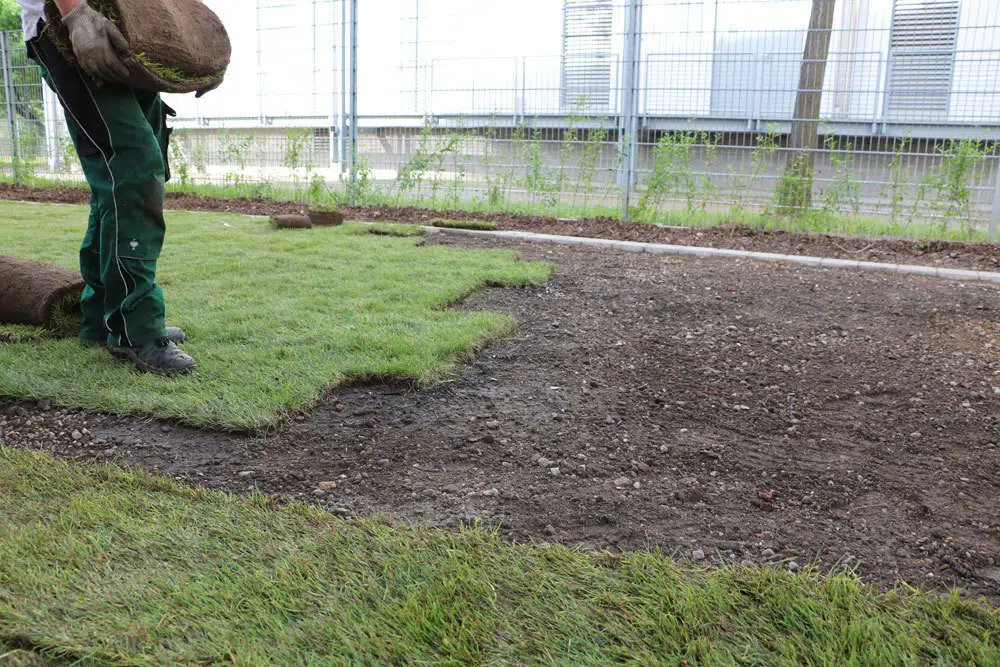
Waterlogging
Symptoms
- uniform yellow-brown discoloration of the culms
Possible cause
- too intensive watering
- resulting in waterlogging in the subsoil
- in the long run rotting of the roots and death of the plants
- discoloration of the leaves due to lack of water supply from the damaged roots
Remedy
- Reduce watering quantity
- make sure that the soil is well-drained when laying the soil in advance
- Add sand if necessary
Tip: Whether there is too much or too little water in the soil can be determined very easily at the beginning by lifting a sod. If the soil and the lawn are moist, everything is fine. If it is dry or muddy wet, on the other hand, action is needed! When laying new turf, water every 2-3 days in spring and autumn, and initially daily in midsummer! Watering around 10 to 12 liters per square meter is usually adequate.
Nutrient deficiency
Symptoms
- limp, lying leaves with increasing brown coloration
Possible cause
- too low nutrient content in the soil
- no access to nutrients due to lack of soil contact of the sode
Remedy
- Nutrient supply through fertilizer application
- In case of insufficient soil contact, proceed as described under the heading “Water deficiency”.
Acidification of the soil
Symptoms
yellow matted areas of the lawn, usually after the first winter
Possible cause
- too acidic soil
- ideal Ph-value 6-7, from approx. 5.5 critical
- rapid spread of yellow mosses, which prefer acidic soils
Remedy
three-phase remedy usually useful:
- Scarify for better aeration
- Determine Ph-value with test strips to find out cause for sure
- In case of actual overacidification, add lime to neutralize acidity
- pH-value test strips
Too frequent or short lawn cutting
Symptoms
Brown discoloration from the leaf tips
Possible cause
- lawn cut too frequently in the growing phase
- too low cutting height chosen
- in both cases too high stress for the culm and consequent dieback
- Remedy
Increase mowing interval
Select a cutting height of not less than 4 to 5 centimeters in the growth phase
thus leaving sufficient development reserves for the culms for the energy-sapping root formation
Tip: Even though in many cases the cause seems to be identified quite quickly, it is worthwhile to take a comprehensive look at several factors.
Frequently, different “problems”, some of which are of varying severity, come together, which in sum then lead to the discoloration of the lawn. If one cause is eliminated, the symptoms may disappear, but optimum growth is only achieved when all the framework parameters are in the green (in the truest sense of the word).
On the other hand, those who know and take into account the peculiarities of rolled turf from the outset will avoid numerous difficulties without ever coming into contact with the resulting symptoms.
Special features of rolled turf
Ultimately, however, the lawn from the roll is no more or less, than normal grasses. For faster installation and a more successful growing phase, these are merely cultivated beforehand under monitored conditions and harvested as a closed and contiguous area.
Logically, as a result, there are then other things to consider during installation than with the familiar seeding. While germination and sprouting are inconsequential, since they have already taken place, the focus is on a good connection between the laid sod and the subsoil.
A wrinkle-free, flat laying on a loose and levelled subsoil allows the turf to grow easily into the existing subsoil. In this way, the lawn can easily draw on the reservoirs in the soil, ensuring an independent supply of water and nutrients in a short time.
If, therefore, particular importance is attached to precisely this aspect of soil contact when installing sod, the stage is set for growth with as little brown or yellow discoloration as possible.

